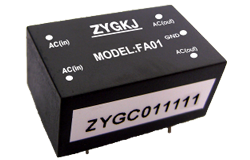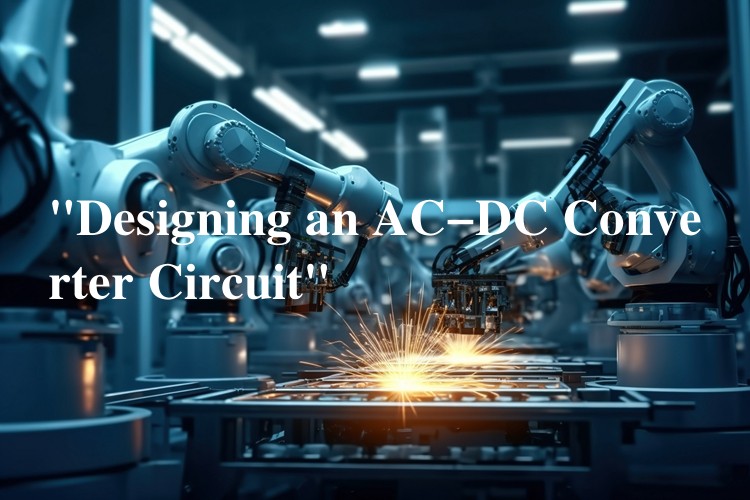소식
Bidirectional DC DC Converter: Principles, Topologies, and Applications
저자: ZYG 전원 모듈 Time: 2023-6-24
A bidirectional DC-DC converter is a power electronic device that can transfer electrical energy bidirectionally between two DC voltage levels. It is widely used in various applications, including electric vehicles, renewable energy systems, and battery energy storage systems. This article will explore the principles, topologies, and applications of bidirectional DC-DC converters.
Principles of Bidirectional DC-DC Converter
The main function of a bidirectional DC-DC converter is to transfer power from one DC voltage level to another. The power transfer can be either unidirectional or bidirectional. A bidirectional converter can transfer energy from a high voltage source to a low voltage load and vice versa. Bidirectional DC-DC converters typically consist of two power converters, each with its own power switch and control circuit. One converter operates in the forward direction, transferring energy from the input voltage to the output voltage, while the other converter operates in the reverse direction, transferring energy from the output voltage to the input voltage.
The operation of a bidirectional converter is controlled by a feedback loop that adjusts the duty cycle of the power switches to maintain the desired output voltage level. The duty cycle determines the amount of time the power switch is on during each switching cycle. By adjusting the duty cycle, the output voltage can be regulated to a desired level.
Topologies of Bidirectional DC-DC Converter
There are several topologies of bidirectional DC-DC converters, including full-bridge, half-bridge, and interleaved. Each topology has its advantages and disadvantages, and the choice of topology depends on the specific application requirements.
The full-bridge bidirectional DC-DC converter is a popular topology used in high-power applications. It consists of four power switches arranged in a bridge configuration. In the forward direction, the input voltage is applied across the diagonal of the bridge, while the load is connected across the other diagonal. In the reverse direction, the input and output terminals are swapped, and the converter operates in the opposite direction.
The half-bridge bidirectional DC-DC converter is a simpler topology that uses two power switches. In the forward direction, the input voltage is applied across one switch, while the load is connected across the other switch. In the reverse direction, the input and output terminals are swapped, and the converter operates in the opposite direction.
The interleaved bidirectional DC-DC converter is a more complex topology that uses multiple power converters in parallel. This topology has the advantage of reducing the input and output current ripple and improving the overall efficiency.

Applications of Bidirectional DC-DC Converter
Bidirectional DC-DC converters are widely used in various applications, including electric vehicles, renewable energy systems, and battery energy storage systems. In electric vehicles, bidirectional converters are used to transfer energy between the battery pack and the vehicle\’s electrical system. The converter can charge the battery pack when the vehicle is braking or decelerating, and it can discharge the battery pack to power the vehicle\’s electrical system when accelerating.
In renewable energy systems, bidirectional converters are used to transfer energy between the DC voltage level of the renewable energy source, such as a solar panel or wind turbine, and the DC voltage level of the load or the battery storage system. The converter can also transfer energy from the battery storage system to the load when the renewable energy source is not available.
In battery energy storage systems, bidirectional converters are used to charge and discharge the battery pack. The converter can charge the battery pack when excess energy is available from the grid or a renewable energy source, and it can discharge the battery pack to supply power to the load when needed.
결론
In summary, bidirectional DC-DC converters are important power electronic devices that can transfer energy bidirectionally between two DC voltage levels. They are widely used in various applications, including electric vehicles, renewable energy systems, and battery energy storage systems. The choice of topology depends on the specific application requirements, and the operation of the converter is controlled by a feedback loop that adjusts the duty cycle of the power switches to maintain the desired output voltage level.
이전의: ZP Series AC DC Converter – Efficient Power Conversion Solutions
다음: Medical Power Series: Empowering Healthcare Professionals and Patients for Better Health
관련 정보
-
2023-7-6
China AC DC Converter Module manufacture
An AC DC converter module is an essential component in various electronic devices and systems. It plays a crucial role in converting alternating current (AC) power into direct current (DC) power, providing the necessary voltage and current levels required for the proper functioning of electronic circuits. The AC DC converter module consists of several key components, including transformers, rectifiers, filters, and voltage regulators. Each component plays a specific role in the conversion process. The transformer is responsible for stepping down or stepping up the input voltage level to the desired output voltage level. It consists of primary and secondary windings that are magnetically coupled to transfer energy from the input side to the output side. The primary winding is connected...
세부 정보보기 -
2023-4-21
How to Differentiate Between AC and DC Power Supply
When it comes to electrical power supply, there are two main types: AC and DC. AC stands for alternating current while DC stands for direct current. The main difference between the two is in the direction that the current flows. While AC flows in a back-and-forth motion, DC flows in only one direction. In this article, we will explore the various ways in which AC and DC power supply can be differentiated. 1. Source of the power supply The first way to differentiate between AC and DC power supply is by looking at the source. AC power supply is usually produced by generators, which use a rotating magnetic field to produce a voltage that alternates in direction. On the other...
세부 정보보기 -
2023-3-31
AC-DC 컨버터 공장의 미래: 주목해야 할 트렌드 및 기술
The AC-DC converter industry has experienced significant growth in recent years, driven by increased demand for high-performance and energy-efficient power supply solutions. As the industry continues to evolve, several trends and technologies will shape the future of AC-DC converter factories. Digitalization The rise of Industry 4.0 has led to the digitalization of many manufacturing processes, and AC-DC converter factories are no exception. By implementing digital technologies such as the Industrial Internet of Things (IIoT) and big data analytics, factories can improve efficiency, reduce waste, and enhance product quality. For example, IIoT sensors can be used to monitor equipment performance and detect potential issues before they cause downtime or quality issues. Big data analytics can also be used to optimize...
세부 정보보기 -
2023-11-18
Best Modular Power Supply for Gaming PC
When it comes to building a gaming PC, one of the most crucial components that should not be overlooked is the power supply unit (PSU). A good PSU ensures that your system receives a stable and reliable power source, preventing any potential damage to the components and allowing for smooth and uninterrupted gameplay. Among the different types of PSUs available in the market, modular PSUs have gained popularity among gamers due to their flexibility and ease of use. In this article, we will explore some of the best modular power supplies that are specifically designed for gaming PCs, taking into consideration factors such as performance, efficiency, and affordability. One highly recommended modular power supply for gaming PCs is the Corsair...
세부 정보보기 -
2023-4-27
Designing an AC-DC Converter Circuit
Designing an AC-DC Converter CircuitAn AC-DC converter circuit is a type of electronic circuit that converts alternating current (AC) to direct current (DC). This type of circuit is commonly used in power supplies for electronic devices and appliances. Designing an AC-DC converter circuit involves selecting the appropriate components and designing a circuit that can efficiently convert AC to DC.The first step in designing an AC-DC converter circuit is to determine the requirements for the circuit. This includes the input voltage, output voltage, output current, and efficiency. The input voltage is the AC voltage that will be supplied to the circuit. The output voltage is the DC voltage that the circuit will produce. The output current is the current that the...
세부 정보보기 -
2023-6-18
DPX Series DC-DC Converter: Efficient and Reliable Power Conversion Solution
The DPX Series DC-DC Converter is an innovative power conversion solution that combines efficiency and reliability. This converter is designed to provide a stable and regulated output voltage, making it ideal for use in a variety of applications, including telecommunications, industrial automation, and renewable energy systems. Efficiency is a key feature of the DPX Series DC-DC Converter. With its state-of-the-art design and advanced control algorithms, this converter can achieve conversion efficiencies of up to 98%. This means that the converter wastes very little energy, resulting in lower operating costs and reduced environmental impact. Another important feature of the DPX Series DC-DC Converter is its high reliability. This converter is designed to operate in harsh environments, with a wide operating temperature...
세부 정보보기


















